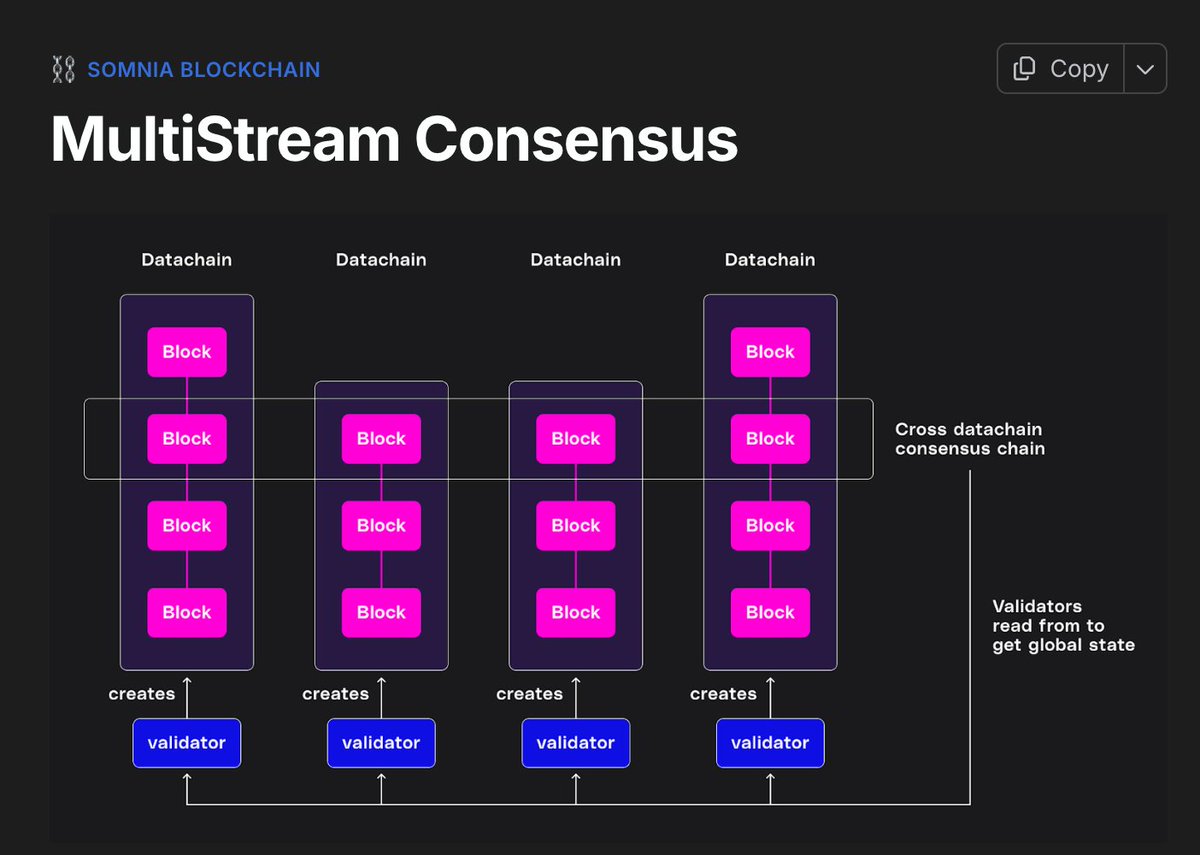[GUEST ACCESS MODE: Data is scrambled or limited to provide examples. Make requests using your API key to unlock full data. Check https://lunarcrush.ai/auth for authentication information.]  EricF [@EricCLFung](/creator/twitter/EricCLFung) on x 15.9K followers Created: 2025-07-15 14:55:10 UTC The key question: can @Somnia_Network optimize for both? If Somnia or HAS already adopted adaptive validator clustering, parallel execution (like what Aptos or Sei are exploring), or ZK-based proofs for batching, it could maintain performance as it decentralizes?? Or is the mutlistream consensus just solves all of this?! But if it just adds more validators without protocol-level optimizations, performance might degrade. Quantity may lower quality, unless the architecture anticipates this, and by using this mutlistream Only the owning validator ever adds blocks to their data chain, and there are no safety mechanisms in place to avoid them forking their data chain or proposing invalid blocks. In other words, the data chains have no consensus mechanism at all. Fast blockchains look great at launch. But staying fast with hundreds or thousands of validators is the real challenge. (4/4)  XXX engagements  **Related Topics** [sei](/topic/sei) [validator](/topic/validator) [somnia](/topic/somnia) [Post Link](https://x.com/EricCLFung/status/1945135052515631256)
[GUEST ACCESS MODE: Data is scrambled or limited to provide examples. Make requests using your API key to unlock full data. Check https://lunarcrush.ai/auth for authentication information.]
 EricF @EricCLFung on x 15.9K followers
Created: 2025-07-15 14:55:10 UTC
EricF @EricCLFung on x 15.9K followers
Created: 2025-07-15 14:55:10 UTC
The key question: can @Somnia_Network optimize for both?
If Somnia or HAS already adopted adaptive validator clustering, parallel execution (like what Aptos or Sei are exploring), or ZK-based proofs for batching, it could maintain performance as it decentralizes??
Or is the mutlistream consensus just solves all of this?!
But if it just adds more validators without protocol-level optimizations, performance might degrade. Quantity may lower quality, unless the architecture anticipates this, and by using this mutlistream
Only the owning validator ever adds blocks to their data chain, and there are no safety mechanisms in place to avoid them forking their data chain or proposing invalid blocks. In other words, the data chains have no consensus mechanism at all.
Fast blockchains look great at launch. But staying fast with hundreds or thousands of validators is the real challenge. (4/4)

XXX engagements